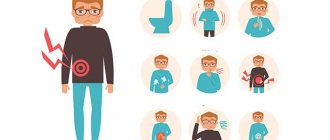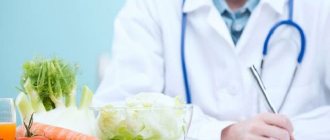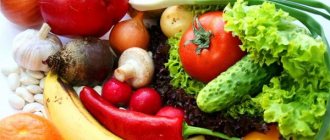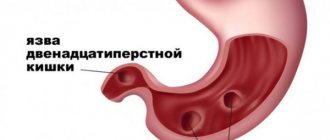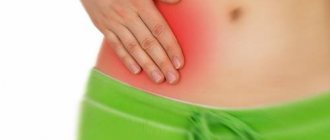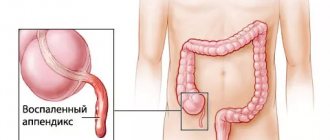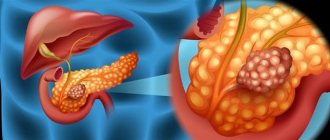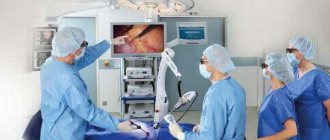In modern medicine, removal of intestinal polyps during colonoscopy is a common practice. Endoscopic surgery allows you to avoid abdominal surgery, shorten the recovery period and minimize potential complications. Diet after removal of intestinal polyps is an important link in the rehabilitation period.
The endoscopic method makes it possible to remove polyps up to 22 mm during colonoscopy. In the operated intestine, conditions are created for the rapid development of the inflammatory process. The task of the doctor and the patient is to prevent this from happening and to allow the colon mucosa to recover. Antibiotic therapy can prevent the development of inflammation. At the same time, during the rehabilitation period, attention is paid to a properly composed menu.
Table of contents
- Goals and objectives of therapeutic nutrition after removal of polyps in the intestines Principles of diet
- Do's and don'ts
- Allowed products after removal of a polyp in the large intestine
Complications after intestinal polypectomy
Modern equipment and the professionalism of the doctor virtually eliminate the occurrence of any complications. However, it is impossible to accurately predict the behavior of the human body in response to even minimally invasive interventions.
The main complications are:
- Bleeding. Typically, bleeding is associated with insufficient hemostasis or incomplete removal of the polypous lesion. The main causes of insufficient hemostasis are mechanical excision of the polyp stalk or its partial intersection with cutting currents. Delayed bleeding is also identified, when patients notice blood 3-7 days after the procedure. Usually the cause of such bleeding is the separation of the scab from the stump of the vessel. Medical treatment is symptomatic, aimed at the use of hemostatic drugs, blood transfusions, enemas with cool water. In severe cases, repeated surgical manipulation is performed.
- Submucosal hematomas. Neoplasms resemble swelling of the mucous membranes and tend to constantly increase and grow. It is recommended to remove such pathologies using a loop electrode and carefully monitor hemostasis. If left untreated, the hematoma leads to the formation of a tumor or contributes to the recurrence of the polyp.
- Burns. Thermal damage to the intestinal walls often occurs in the presence of existing ulcerative-erosive foci, and also occurs as a result of cauterization of too large a wound surface. With burns, patients experience pain in the lower abdomen, increased temperature, especially in the rectal area, and symptoms of intestinal irritation. For deep burns and a tendency to perforation of the mucous membranes of the organ, surgical treatment is required.
In rare cases, adhesions may form. Against the background of manipulation, exacerbation of hemorrhoidal disease and the formation of secondary infectious complications associated with the lack of adequate antiseptic treatment before and after removal of polyps are possible.
Postoperative management of the patient, even after endoscopic polypectomy, is an important aspect of successful recovery. Removal of various polyps in the intestine is a standard and simple procedure that is performed during diagnostic endoscopic methods.
Read what a fibrous polyp of the anal canal is in this article.
You can make an appointment with a doctor directly on our website.
Be healthy and happy!
Goals and objectives of dietary nutrition after removal of intestinal polyps
The large intestine needs rest after surgery, but nutrients must continue to flow into the body to ensure vital functions. Partially digested food will come into contact with the wound surface of the intestine, so it should be gentle in relation to:
- temperature;
- chemical composition;
- mechanical impact.
In order for dishes after polyp removal to benefit the patient, they must be:
- warm;
- chemically safe (salt and spices, extractives are excluded);
- crushed by any available method to a pulpy state.
The diet after removal of intestinal polyps by endoscopic method should be maintained for 1 to 4 months, depending on the location, number and size of the polyps.
Nutrition in the postoperative period is adjusted in three stages:
- You are allowed to drink water.
- Carbohydrate nutrition (soups with vegetable broth), slimy porridges, jelly, decoctions.
- Adding proteins and fats.
The menu will expand as the intestinal mucosa is restored.
On the day of the procedure, eating is strictly prohibited. Fasting in the first days is called a “zero diet”. On days 2-3, table No. 2 is prescribed. After a month from the moment of colonoscopy, the diet is expanded to include cereals, fish, meat, and vegetables. This approach prevents relapses.
Diet principles
The diet after intestinal surgery in the first days will be unbalanced in proteins, fats and carbohydrates. The menu begins to expand from 8 to 10 days. After excision of polyps, you should not eat foods that cause increased gas formation.
For example, the following are prohibited:
- fresh berries and fruits;
- all types of legumes;
- raw root vegetables;
- any varieties of cabbage.
You can eat:
- baked apples;
- boiled berries in the form of compotes or jelly;
- vegetable soups.
All products must be heat treated - this is the most important principle of nutrition after polypectomy.
Diet goals
The nutrition of a patient who has undergone surgery to remove a polyp in the stomach is organized in accordance with his condition.
After surgery, you need to take measures to heal the wound surface and prevent it from being injured by food particles, so as not to cause complications. Therefore, the main goal of the diet is to protect the mucous membrane from mechanical, thermal and chemical damage.
It is also important to restore the patient’s body by providing it with the necessary vitamins and microelements. In the period before surgery, the patient is also forced to follow a diet, which leads to vitamin deficiency and a lack of certain substances.
On this topic
- Digestive system
Differences between sigmoidoscopy and colonoscopy
- Natalya Gennadievna Butsyk
- December 9, 2021
Blood loss may occur during surgery. These difficulties must be neutralized with the help of properly organized nutrition. Thanks to this, recovery will go faster.
In this regard, the second goal is to organize physiologically complete nutrition, in which the patient can obtain the substances he needs from food. This will restore the level of proteins, minerals and vitamins. But the products should not be heavy and irritate the stomach.
Another feature is taking into account the characteristics of the patient’s condition. Due to individual differences, the postoperative recovery process occurs at different rates.
It is necessary to monitor the patient's condition and promptly adjust the diet in accordance with his needs. He should gradually return to his normal diet.
Early postoperative period
The first day after the operation you are not allowed to eat at all. In addition to the existence of a wound surface on the intestinal mucosa, this is facilitated by the condition of the person who has undergone surgery. As a rule, there is drowsiness, general weakness, and nausea.
Attention!
The first test meal occurs on the second or third day in a small volume - from 50 to 100 ml.
In the first days you need to eat in small portions up to 7 – 8 times a day. Nutrition after removal of polyps in the intestines begins on the second day in the form of low-fat warm broth. In the early postoperative period, you are allowed to drink rosehip decoction and eat non-sour fruit jelly. The serving volume should not exceed 200 ml.
Do's and don'ts
If you feel satisfactory, the next stage of dietary rehabilitation will be the transition to table No. 2.
Table 1. Allowed foods and dishes after removal of a polyp in the large intestine
| Can | It is forbidden |
| Porridge – rice, buckwheat, oatmeal | Milk, ice cream, chocolate |
| Steam omelette | Dried fruits |
| Steam cutlets made from fish (hake), rabbit, turkey and chicken | Juices, carbonated mineral waters and sweet drinks, alcohol |
| Mashed potatoes | Various sauces: ketchup, mayonnaise, mustard |
| Kefir | Fatty meat or fish |
| Weak meat broths | Pickled vegetables, pickles, smoked meats |
| Fruit jellies | Yeast buns, fresh bread, cakes, crackers |
You need to eat at least six times a day. To prevent the reappearance of colon polyps, nutrition should be gentle not only during the recovery period, but throughout life. Don't let this scare you, diet meals can be delicious and beautifully presented. How to do this - read below.
Diet during subsequent rehabilitation after surgery
An approximate menu after removal of intestinal polyps by colonoscopy will consist of combinations of the following dishes:
- vegetable soup with meatballs (chicken, turkey);
- casserole of cottage cheese, vegetables;
- soup from low-fat fish;
- pumpkin soup;
- steamed rice;
- salad of boiled vegetables (beets, potatoes, carrots);
- rice porridge with a little milk;
- buckwheat porridge with steamed hake fish;
- steam omelette;
- mashed potatoes with boiled chicken fillet or meatballs.
You need to eat little and often, you should not overeat. Excessive food volume leads to intestinal distension and increased production of digestive juices. Those who suffer without them are allowed to use sweets in their diet. It can only be marshmallows, marshmallows, jam. You can’t eat only sweets, everything should be in moderation.
Allowed products after removal of a polyp in the large intestine
After removal of a polyp in the intestine, the diet has significant restrictions, especially in the first days. Therefore, pay more attention to those products that are allowed for consumption, but have not yet been mentioned.
Of dairy products, you can only eat low-fat cottage cheese. Milk, if used, is in limited quantities and is included in other dishes (omelet, oatmeal), and not separately. When it comes to cheeses, they choose non-acidic varieties and varieties containing little salt. These are young cheeses, for example, Adyghe. Pay attention to the fat content of the product, it should be low. The lack of fat in the body is compensated for by vegetable oils:
- sunflower;
- corn;
- olive;
- creamy.
Among the spices for dishes, you can use salt (no more than 6 grams per day), sugar, honey. The body needs a sufficient amount of fluid during the recovery period. These can be compotes, green tea, herbal decoctions.
What not to eat
The ban applies to the following products:
- melon, grapes;
- porridge: barley, pearl barley, wheat;
- pasta;
- confectionery products: cakes, cookies, sweets;
- sour cream, hard mature cheeses;
- sausages, any sausage, lard;
- canned fish, all types of smoked and dried fish;
- bread kvass, black tea, sweet carbonated drinks.
Even a month after removal of polyps in the intestines, you need to eat according to the doctor’s recommendation, taking into account the lists of recommended and prohibited foods.
Permitted and prohibited products
The menu can include the following products:
- lean varieties of fish;
- unleavened cookies, biscuits, crackers, stale bread;
- dietary meat (rabbit, turkey, chicken fillet);
- low-fat fermented milk products, cream and whole milk in limited quantities;
- cereals (except pearl barley, millet and corn porridge);
- vegetables (except legumes, garlic, onions, radishes);
- low-fat fish, vegetable or meat broth;
- weak green or black tea, hibiscus, herbal infusions.
Patients may also be interested in the list of permitted sweets. It is allowed to consume marmalade, marshmallows, marshmallows, jam, honey and preserves in moderate quantities.
Eating for polyps in the intestines involves avoiding the following dishes and products:
- hot, sour and fatty sauces;
- fat meat;
- puff pastries;
- baking;
- pastries and cakes;
- canned food, pickles and smoked meats;
- grape juice;
- vegetables and fruits with rough seeds and skins in raw form;
- dates and figs;
- grape juice;
- ice cream;
- carbonated drinks and alcohol;
- chocolate;
- mushrooms.
If you have any questions about what you are allowed to consume during the rehabilitation period, it is recommended to consult a doctor.
Depending on the patient's condition, the diet may be changed.
Sample menu for a week by day
The menu after removal of polyps in the intestines consists of 5 meals. The following time frames are recommended:
- first breakfast 7 – 8 am;
- second breakfast 10 – 11 o’clock;
- lunch 13 – 14 hours;
- afternoon tea 16 – 17 hours;
- dinner until 19:00.
For second breakfast and afternoon snack we recommend:
- fruit purees;
- croutons;
- various casseroles (cottage cheese, vegetable);
- fruit jellies and jelly;
- baked fruit (apples),
- cottage cheese.
To organize your meals according to the new rules, we provide an approximate distribution of dishes that can be used by day for the week.
1 day
| Time | Menu |
| 7.30 | Buckwheat porridge, omelette cooked in the oven, rosehip infusion |
| 10.30 | Banana soufflé |
| 14.00 | Fish soup with steamed fish cutlet, mashed potatoes, fruit jelly |
| 17.00 | Baked peaches with cottage cheese and honey |
| 18.30 | Pancakes from zucchini, carrots, Crimean onions, cooked in the oven |
Day 2
| Time | Menu |
| 7.30 | Oatmeal with a little milk and sugar |
| 10.30 | Baked pear |
| 14.00 | Soup with rabbit meatballs, oatmeal, vegetable salad, dried apple compote |
| 17.00 | Apple-pear jelly |
| 18.30 | Squash stew, baked pumpkin with apples, low-fat natural yogurt |
Day 3
| Time | Menu |
| 7.30 | Chicken broth with egg, blueberry jelly |
| 10.30 | Curd and carrot casserole |
| 14.00 | Noodle soup with chicken meatballs, wheat porridge, baked beets, cocoa water |
| 17.00 | Plum-apple jelly |
| 18.30 | Baked potato and onion pancakes |
4 day
| Time | Menu |
| 7.30 | Low-fat cottage cheese, tea, oatmeal cookies |
| 10.30 | Apple jelly |
| 14.00 | Chicken broth soup, steamed fish cutlet, stewed cabbage, white tea |
| 17.00 | Banana mousse |
| 18.30 | Boiled fish fillet with vegetables, rosehip infusion |
5 day
| Time | Menu |
| 7.30 | Poached egg, vegetable salad (boiled vegetables) |
| 10.30 | Curd soufflé with blueberries and peaches |
| 14.00 | Pumpkin puree soup, boiled nutria meat, compote |
| 17.00 | Cherry-apple jelly |
| 18.30 | Egg casserole with chicken, low-fat kefir |
Day 6
| Time | Menu |
| 7.30 | Steamed omelette, dried bread, low-fat cottage cheese, green tea |
| 10.30 | Roasted pumpkin puree |
| 14.00 | Rice soup with turkey meatballs, zucchini soufflé, uzvar |
| 17.00 | Blueberry jelly |
| 18.30 | Fish fillet baked with vegetables, fruit jelly |
Day 7
| Watch | Menu |
| 7.30 | Oatmeal in water with boiled beets, tea |
| 10.30 | Carrot casserole |
| 14.00 | Vegetable broth with chicken meatballs, rice with vegetables, raspberry compote |
| 17.00 | Baked apple with dates |
| 18.30 | Boiled vegetables (broccoli, carrots, beets), meat casserole, low-fat yogurt |
Dish recipes
The diet after removal of a polyp in the large intestine primarily requires gentle heat treatment. Products must be boiled, baked or steamed. Recipes for making porridge, steamed cutlets, and soup do not differ from well-known recommendations. There will be special requirements for fruit jelly and compotes. They should not be saturated; fruit juice and water are taken in a 1:1 ratio, no more.
To make it easier to create a menu, we offer several recipes.
| Dish | Recipe |
| Chicken fillet baked with vegetables | Broccoli is divided into inflorescences and boiled in salted water for 3–5 minutes along with Brussels sprouts. The chicken fillet is rubbed with salt. Lightly sauté the onions in olive oil. Place the meat, Brussels sprouts and broccoli in a baking dish greased with olive oil. Add onion on top and pour in a small amount of chicken broth. Bake in a preheated oven at 180 °C |
| Meat casserole | Boil the rice until half cooked (50 g). Onions, zucchini, carrots, bell peppers are ground in a blender. Mix rice, minced meat (500 g) and vegetables, add salt. The resulting mass is placed in a baking dish with a lid. Bake for 40 minutes. in a preheated oven to 200 °C |
| Egg casserole with chicken fillet | Beat eggs (3 pcs.) well with a mixer or whisk, salt. Add 2 tbsp. l. flour, beat for another 2 minutes. Add warm milk (150 ml), beat for another 2 minutes. Add chicken fillet cut into strips to the egg mixture and mix. Bake for 20 minutes. in a mold greased with vegetable oil, in a preheated oven at 180 °C |
| Pumpkin soup with chicken | The chicken is poured with cold water, salted, bay leaves are added and the broth is boiled. Pumpkin, carrots and potatoes are peeled, cut into cubes and boiled in broth until tender. The finished carcass is removed from the broth, the meat is separated and cut into strips. Beat the vegetables and broth with a blender into a homogeneous puree. The resulting mixture is placed in a cleaned decorative pumpkin, chicken pieces are placed on top and baked in the oven for 25–35 minutes. |
Authorized Products
The diet after removal of polyps is determined by the doctor; he takes into account the course of the disease and the individual characteristics of each patient’s body. But, as a rule, the following products are included in the therapeutic diet:
- dried white bread;
- pasta, cereals;
- chicken, lean beef;
- rabbit, turkey meat;
- low-fat fish;
- boiled eggs, steamed omelet;
- low-fat and non-acidic dairy products.
The patient's diet must include vegetables, but only boiled or steamed. Fresh fruits and vegetables can only be eaten a few weeks after surgery.
Advice! You are allowed to drink weak black or green tea, dried fruit compote, herbal decoctions, and jelly. Medicinal mineral water without gas (Borjomi, Essentuki) will be useful.
Transition from medical nutrition to a normal diet
The dietary table after removal of polyps in the intestines is allowed to change after a month after the intervention. The moment of transition to the usual regime and type of nutrition will depend on several factors:
- complete healing of the mucosa, confirmed by a doctor after a colonoscopy;
- If you have a family history of colon diseases, you should stick to a gentle diet for the rest of your life.
Sometimes patients use folk remedies for a quick recovery. Most often, decoctions of herbs are used (celandine, chamomile, St. John's wort, yarrow). Some plants actually have anti-inflammatory and healing effects, but some can be dangerous.
Important!
All actions related to the use of folk remedies must be coordinated with a doctor.
Diet as a prevention of recurrence of polyps in the intestines
Recommendations on nutrition after surgery will also be relevant for preventing the recurrence of polyps in the colon. A slight deviation from the specified diet regarding the number of meals is possible. Regarding the types of dishes and heat treatment of products, the doctor’s advice will remain the same.
Remember!
Prevention of the formation of polyps includes not only adherence to dietary rules, but also cessation of smoking, alcohol, annual examination of the large intestine, timely detection and treatment of other diseases of the gastrointestinal tract.
Principles of nutrition
To ensure that diet goals are achieved, meals should be organized according to rules. You can find out them from your doctor, since each case is individual. But there are also general recommendations.
Compliance with the regime
The optimal frequency of meals is 5-6 times a day. Portions should be made small so as not to overload the gastrointestinal tract and not stretch the stomach. But the feeling of hunger should not appear either - then gastric juice is produced, injuring the mucous membrane. Before going to bed, you should also eat something light.
Healthy lifestyle
The patient must give up bad habits. Smoking harms the entire body and gastrointestinal tract, so you need to quit. Alcohol consumption is strictly prohibited.
Eating protein foods
To quickly restore the body and its further functioning, it is necessary to strengthen the immune system. Immunoglobulins are formed with the participation of protein, so it must be consumed in sufficient quantities.
Control of carbohydrate metabolism
The amount of carbohydrates consumed should not exceed the norm. It is also necessary to reduce the consumption of complex compounds - they take a long time to digest and create a burden on the gastrointestinal tract.
Consumption of vitamins and minerals
Vitamins D and E are especially needed, as well as lutein. With a sufficient content of all microelements and substances, the body is distinguished by endurance and fights against negative effects.
Avoidance of foods that irritate the gastrointestinal tract
Food for the patient should not be hot or cold. You need to avoid spicy and sour foods and reduce your salt intake.
Vegetables and fruits containing a lot of acids should be excluded from the diet. Suitable types of heat treatment for products are boiling , steaming and baking. Food should be crushed before consumption.
